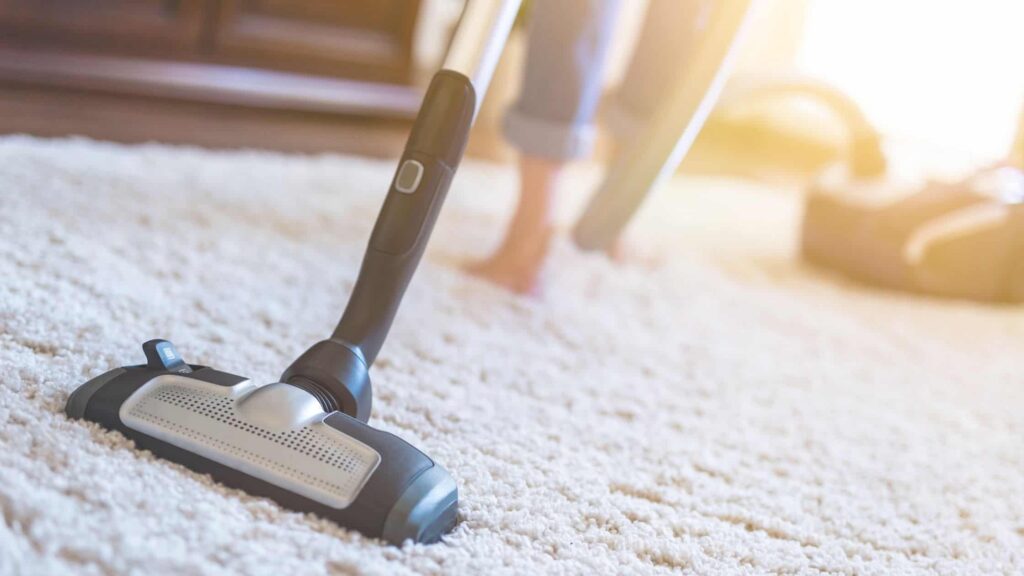Right now in your home, there are items that are off-gassing toxic vapors into your environment which can pose a potential health risk that is not tended to correctly. Cleaning products and furniture can contribute to the VOCs that are in your home, but one of the biggest culprits to the spreading of Violate Organic Compounds in your home is your carpeting. Let’s go over why carpets contain such high levels of VOCs and what you can do to remove new carpet odors in your home.
New Carpeting can potentially off-gass for up to five years, although most of the volatile compounds will begin to dissipate within three months of installation. The concern that we should have especially those with MCS, allergies, asthma, and pulmonary illnesses is the exposure to these toxic vapors while they are present. The majority of industrially manufactured carpeting is impregnated with chemicals during the dying process or during the final stages to make the carpeting flame retardant.
Chemical odors in new carpeting
The largest release of VOCs from new carpeting will occur in the first 72 hours after installation. However, low levels can continue to be emitted for years later (adding to the other VOCs in your home’s air from paints, varnishes, furniture, and other sources).
This is likely one reason why new carpet installation is associated with wheezing and coughing in babies during their first year of life,2 although there are other chemicals of concern as well. As reported by the Ecology Center:3
“Synthetic carpets are made from nylon fibers with a polypropylene backing. Of the chemicals released from carpet, most notable are styrene and 4-phenyl cyclohexane (4-PC), both of which come from the latex backing used on 95 percent of carpets.
The ‘new carpet’ aroma is the odor of 4-PC off-gassing, which is an eye– and respiratory tract irritant that may also affect the central nervous system. The adhesive used to affix the carpet to the floor typically contains benzene and toluene, some of the most harmful VOCs.”
How to treat your carpets to reduce new carpet odors
Most traditional cleaning products will not help in removing the new carpet smell or chemical odors as they are primarily designed to mask the odors with fragrances or perfumes and will do very little to help you neutralize the chemical smell. EnviroKlenz everyday odor eliminator was designed to help those with MCS or environmental illnesses to safely remove chemical odors and fragrances from solid surfaces, furniture, and carpeting. EnviroKlenz everyday odor eliminator does it exactly what the name states as it removes stubborn odors and chemical odors that we come into contact with on an everyday occurrence but does so with a unique technology based on earth minerals. As EnviroKlenz comes in contact with chemical pollutants in circulating air or on surfaces of materials, the product’s chemistry irreversibly attaches to and reacts with the pollutants, and destroys/neutralizes the pollutant.
For further information, check out the EnviroKlenz guide to fast odor elimination here.
The EnviroKlenz Everyday Odor Eliminator was made with those suffering from chemical sensitivities in mind! Chemicals and odors can come from a variety of sources in your home- some you don’t even know about! Now with the EnviroKlenz Everyday Odor Eliminator, you can expel these chemicals from your home with an easy application! Just dilute in a spray bottle 1-part product to 4-parts warm water, and spray on the surface.
- Safe to Use on Any Water-Safe Surface
- Non-Toxic and Fragrance-Free
- Removes the Toughest of Odor and Chemical Smells, FAST!
Everyday Odor Eliminator
✓ Patented earth mineral technology works to attack VOCs and break them down on a compound level
✓ No chemicals or masking agents
✓ Safe to use on any water-safe surfaces, flooring, carpeting, upholstery, and for vehicle deodorization
✓ Remove New Carpet odors, chemical smells, and malodors
EnviroKlenz® Medical Disclaimer:
“Any information that is provided on this website is not for the use by any commercial or personal entity without expressed written consent of the blog author. The material and statements illustrated within this blog are not intended to diagnose, treat, cure, or prevent any diseases or medical conditions. Nor does the author in any way guarantee or validate the validity, totality, or efficacy of any claims and will therefore not be held responsible for the content of any claims. Always consult your medical physician for any specific medical advice or recommendations.”








